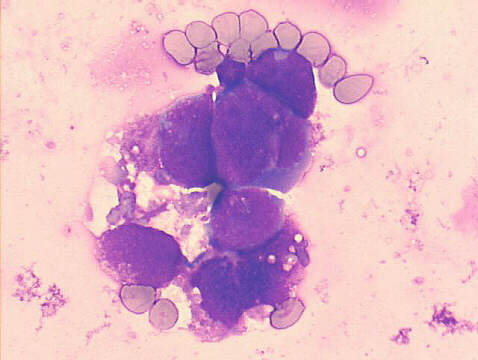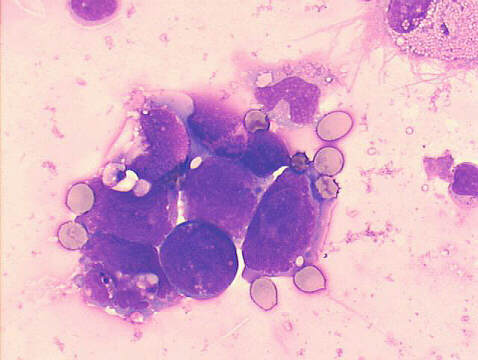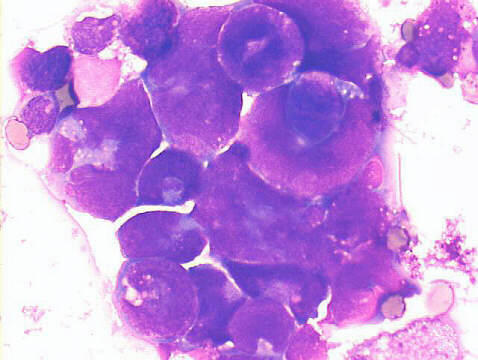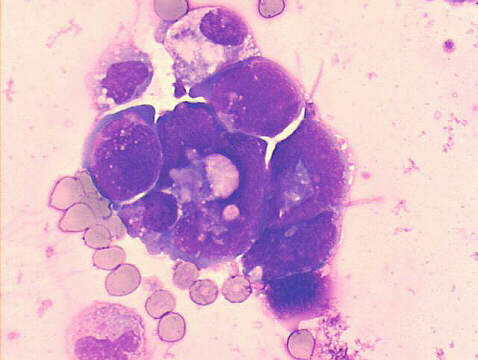



|
|
Medulloblastomas are embryonal tumors that arise in the (pediatric) posterior fossa region of the brain. These tumors are also referred to as primitive neuroectodermal tumor (PNET). They are intensely cellular, with small cellular size, poorly defined cytoplasm, and hyperchromatic nuclei, with occasional formation of rosettes. Areas of necrosis, mitoses, and cyst formation are frequent, and they have a clinically aggressive behavior. Leptomeningeal invasion is frequent, with subsequent metastases in the CSF pathway. On purely morphological (cytological) grounds, they are indistinguishable from metastatic neuroblastomas or retinoblastomas. Medulloblastoma accounts for about 20 percent of childhood brain tumors. They most often occur in the first decade of life; half occur in children younger than 5 to 6 years of age. These tumors are slightly more common in males than in females.
See a previous case of medulloblastoma in our collection.
Features of Medulloblastoma - PNET Cellular patterns: |

| Case A November 2003 | Case B November 2003 | References | List of cases | Atlas |